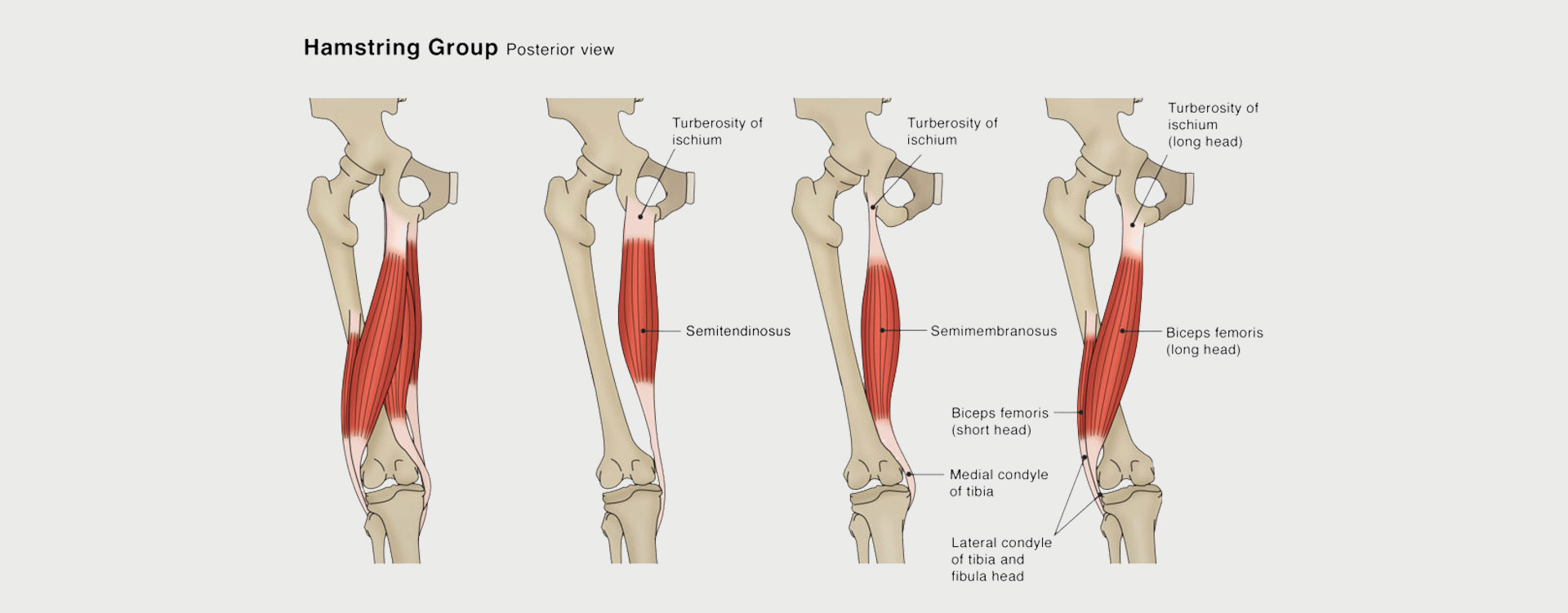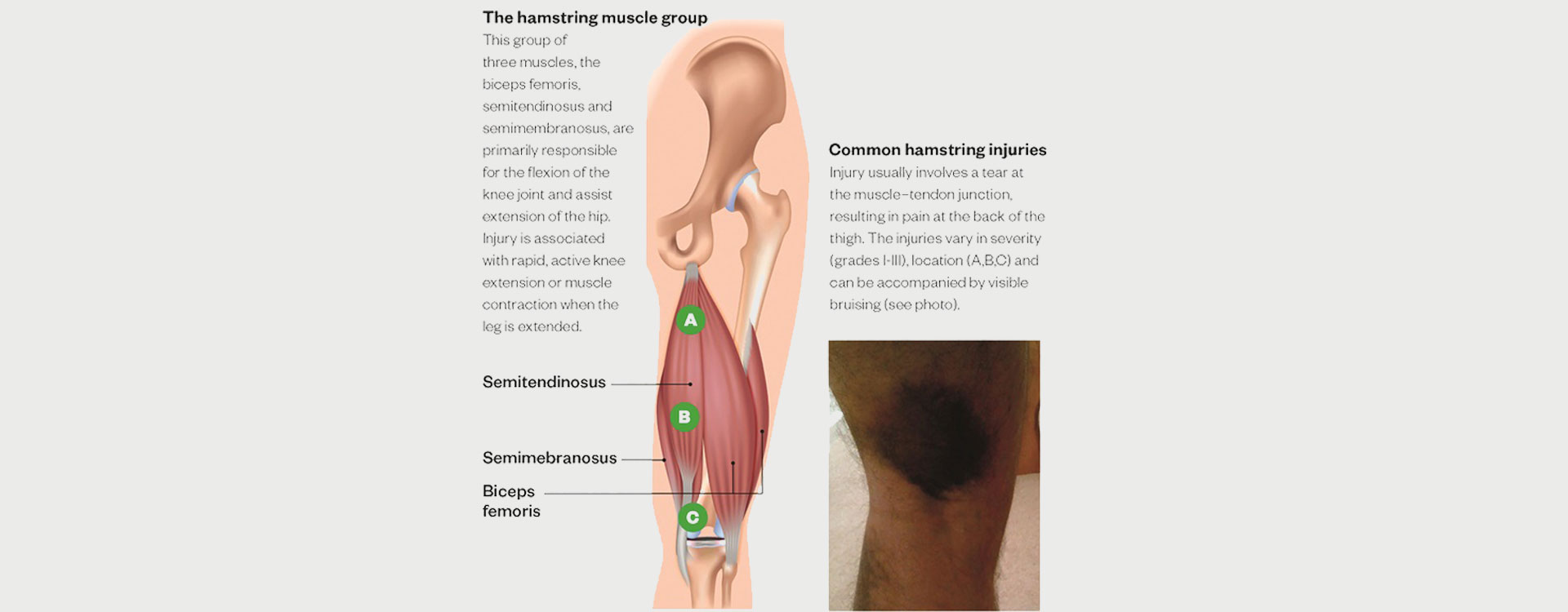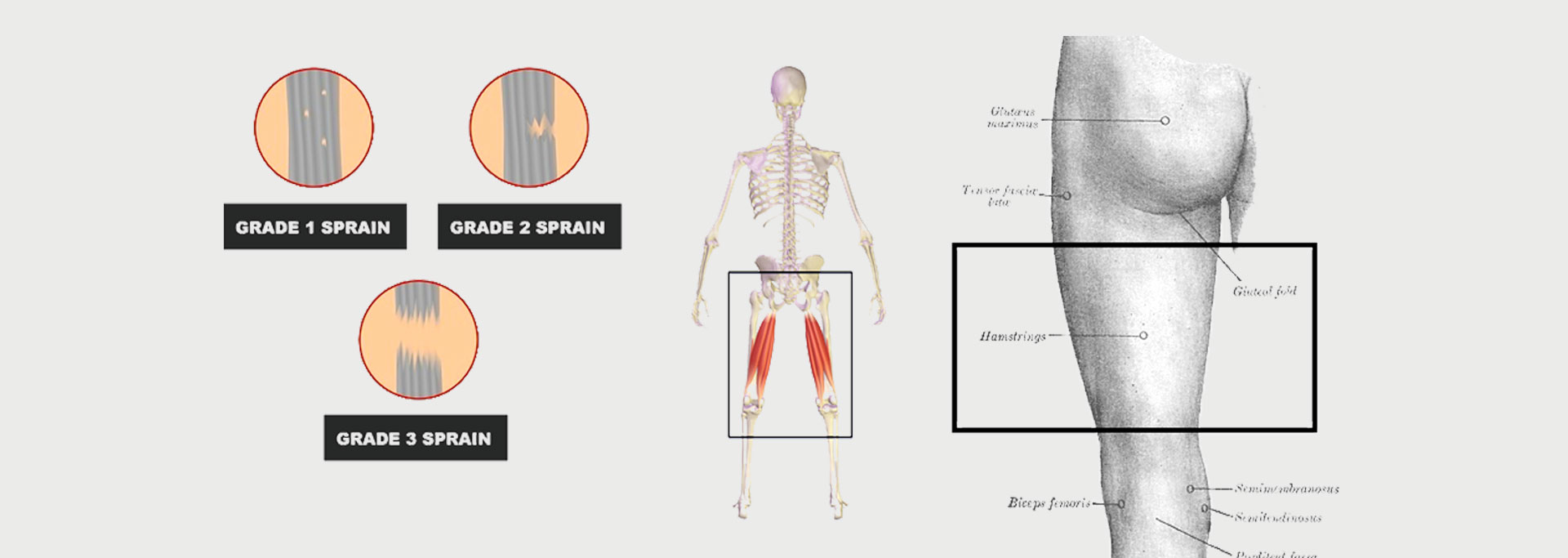HAMSTRING INJURY
THIGH
HAMSTRING MUSCLE INJURY

Hamstring injuries are extremely common among athletes, and we have treated hundreds of sports-specific cases at MOTUS. Athletes can injure their hamstring muscle group during an activity by overloading the muscle with a sudden and extensive contraction. This happens frequently in sports with lots of dynamic movements, such as jumping and sprinting. It’s also common in contact sports, like football, or recreational sports like water-skiing, where the knee is fully extended at the time of the injury. We regularly see hamstring injuries in soccer players, who deal with this injury more than any others.
The hamstring muscle group consists of three muscles: the biceps femoris, the semitendinosus, and the semimembranosus. During a hamstring injury, any one of these muscles can tear at any point along the muscle. When a hamstring is at its longest length, it’s also at its highest tension. At this point, the quadriceps — the muscle group at the front of the thigh — needs to relax. Some studies have suggested that a lack of coordination between the thigh muscles is what causes the hamstring to tear.
A hamstring strain presents with a sudden pain to the back of the thigh. Pain can be severe or mild. Some people hear a popping noise at the time of the injury. Overtime, ecchymosis and swelling might develop. Many different factors can increase the risk of a hamstring injury, and a lot of them are preventable.

For instance, the likelihood of an athlete experiencing a hamstring injury is increased by strength imbalance, limited range of motion, muscle fatigue, or an insufficient warmup. Core imbalance can also be a factor. Treating hamstring injuries is all about learning how each patient moves as well as teaching them the right way to prepare their body for action and follow through with healthy movements.
When we treat a hamstring injury, our goal is to help a patient return to their previous level of play with minimal risk of re-injury. Unfortunately, hamstring strains usually take a while to heal, and almost a third of athletes recovering from a hamstring injury will re-injure it within a year of returning to their sport. We have found success in preventing re-injury by working with our patients to both recover from a strain and strengthen for future prevention. Increasing thigh and core strength, improving flexibility, and learning the right warm up can have a huge impact on whether or not re-injury occurs.

3 Ways to Level Up Your Rehab and Injury Prevention With Us





